
Keywords: sex-ratio
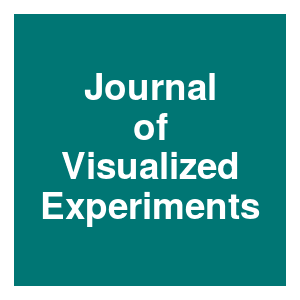
|
Quantifying Fitness Costs in Transgenic Aedes aegypti MosquitoesWilliams, A. E., Sanchez-Vargas, I., Martin, L. E., Martin-Martin, I., Bennett, S., Olson, K. E., Calvo, E., The Journal of Visualized Experiments, 199. 2024.
The present protocol describes how to measure common life parameter data in Aedes aegypti mosquitoes, including fecundity, wing size, fertility, sex ratio, viability, development times, male contribution, and adult longevity. Keywords: agriculture, breeding system, Cas 9, cattle, CRISPR, Gene drive, sex-ratio |
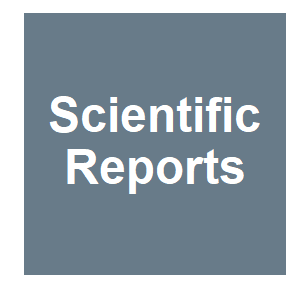
|
Propagation of seminal toxins through binary expression gene drives could suppress populationsJ. Hurtado, S. Revale and L. M. Matzkin, Scientific Reports, 12:6332. 2022.
Gene drives can be highly effective in controlling a target population by disrupting a female fertility gene. To spread across a population, these drives require that disrupted alleles be largely recessive so as not to impose too high of a fitness penalty. We argue that this ... Keywords: agriculture, breeding system, Cas 9, cattle, CRISPR, Gene drive, sex-ratio |

|
Hoisted with his own petard: how sex-ratio meiotic drive in Drosophila affnis creates resistance alleles that limit its spreadW.-J. Ma, K. B. Patch, E. M. Knoles, M. M. Shoaib and R. L. Unckless, bioRxiv, 2022.02.14.480432. 2022.
Meiotic drivers are selfish genetic elements that tinker with gameto-genesis to bias their own transmission into the next generation of off-spring. Such tinkering can have significant consequences on gameto-genesis and end up hampering the spread of the driver. In Drosophila ... Keywords: agriculture, breeding system, Cas 9, cattle, CRISPR, Gene drive, sex-ratio |
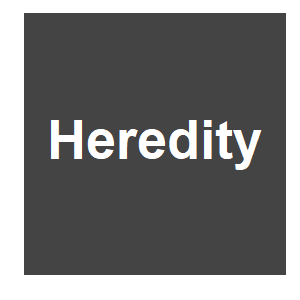
|
Endosymbionts moderate constrained sex allocation in a haplodiploid thrips species in a temperature-sensitive wayA. Katlav, D. T. Nguyen, J. L. Morrow, R. N. Spooner-Hart and M. Riegler, Heredity, 9. 2022.
Maternally inherited bacterial endosymbionts that affect host fitness are common in nature. Some endosymbionts colonise host populations by reproductive manipulations (such as cytoplasmic incompatibility; CI) that increase the reproductive fitness of infected over uninfected ... Keywords: agriculture, breeding system, Cas 9, cattle, CRISPR, Gene drive, sex-ratio |

|
Scientists Used CRISPR Gene Editing to Choose the Sex of Mouse PupsS. Fan, Singuarity Hub, 2021.
“Do you want a boy or a girl?” can be an awkward question.But in certain circles, it’s a question that’s asked every day. Take agriculture. In a perfect world, most cows would only birth females. Chicks would grow up to be all hens. “Sexing” a farm animal when ... Keywords: agriculture, breeding system, Cas 9, cattle, CRISPR, Gene drive, sex-ratio |

|
Propagation of seminal toxins through binary expression gene drives can suppress polyandrous populationsJ. Hurtado, S. Revale and L. M. Matzkin, bioRxiv, 2021.11.23.469777. 2021.
Gene drives can be highly effective in controlling a target population by disrupting a female fertility gene. To spread across a population, these drives require that disrupted alleles be largely recessive so as not to impose too high of a fitness penalty. We argue that this ... Keywords: agriculture, breeding system, Cas 9, cattle, CRISPR, Gene drive, sex-ratio |

|
Meiotic drive does not cause condition-dependent reduction of the sexual ornament in stalk-eyed fliesS. R. Finnegan, M. Mondani, K. Fowler and A. Pomiankowski, Journal of Evolutionary Biology, 11. 2021.
Meiotic drive systems are associated with low-frequency chromosomal inversions. These are expected to accumulate deleterious mutations due to reduced recombination and low effective population size. We test this prediction using the 'sex-ratio' (SR) meiotic drive system of the ... Keywords: agriculture, breeding system, Cas 9, cattle, CRISPR, Gene drive, sex-ratio |
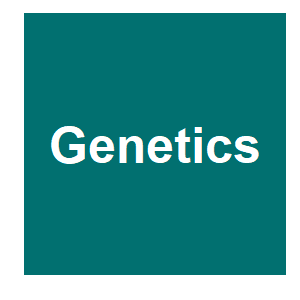
|
X-linked meiotic drive can boost population size and persistenceC. Mackintosh, A. Pomiankowski and M. F. Scott, Genetics, 217:11. 2020.
Here, we find general conditions for the spread and fixation of X-linked alleles. Our conditions show that the spread of X-linked alleles depends on sex-specific selection and transmission rather than the time spent in each sex. Applying this logic to meiotic drive, we show that ... Keywords: agriculture, breeding system, Cas 9, cattle, CRISPR, Gene drive, sex-ratio |

|
Extensive Recombination Suppression and Epistatic Selection Causes Chromosome-Wide Differentiation of a Selfish Sex Chromosome in Drosophila pseudoobscuraZ. L. Fuller, S. A. Koury, C. J. Leonard, R. E. Young, K. Ikegami, J. Westlake, S. Richards, S. W. Schaeffer and N. Phadnis, Genetics, 216:205. 2020.
Here, we conduct a multifaceted study of the multiply inverted Drosophila pseudoobscura SR chromosome to understand the evolutionary history, genetic architecture, and present-day dynamics that shape this enigmatic selfish chromosome. Keywords: agriculture, breeding system, Cas 9, cattle, CRISPR, Gene drive, sex-ratio |

|
The future of beef might be a sausage festN. Johnson, grist, 2020.
N. Johnson. (2020) grist. A media report on the creation of a cow with a sex ratio altering genetic change expected to lead to 3/4 of the cow's offspring being males. This type of sex ratio distortion results in gene drive and is also being considered to help control populations ... Keywords: agriculture, breeding system, Cas 9, cattle, CRISPR, Gene drive, sex-ratio |

|
Meet Cosmo the Frankenbull: Scientists genetically engineer a bull calf so that 75 per cent of its offspring will be maleJ. Pinkstone, Daily Mail, 2020.
J. Pinkstone (2020). Daily Mail. A media report on the creation of a cow with a sex ratio altering genetic change expected to lead to 3/4 of the cow's offspring being males. This type of sex ratio distortion results in gene drive and is also being considered to help control ... Keywords: agriculture, breeding system, Cas 9, cattle, CRISPR, Gene drive, sex-ratio |

|
A Crispr calf is born. It’s definitely a boyM. Molteni, WIRED, 2020.
M. Molteni (2020). Wired. UC Davis scientists spent years editing a sex-determining gene into bovine embryos. In April, Cosmo arrived—and his DNA reveals how far the field has to go. This type of sex ratio distortion results in gene drive and is also being considered to help ... Keywords: agriculture, breeding system, Cas 9, cattle, CRISPR, Gene drive, sex-ratio |

|
Meet the first genetically modified bull. Why did scientists change itJ. Kessler, Free News, 2020.
J. Kessler (2020). Free News. UC Davis scientists have successfully introduced a bovine embryo, or the bovine SRY gene, which is responsible for the development of the male. This is the first demonstration of targeted gene insertion for large DNA sequences through embryo-mediated ... Keywords: agriculture, breeding system, Cas 9, cattle, CRISPR, Gene drive, sex-ratio |

|
Scientists use CRISPR technology to insert sex-determining geneA. Quinton, Phys Org, 2020.
A. Quinton (2020). Phys Org. Scientists at the University of California, Davis, have successfully produced a bull calf, named Cosmo, who was genome-edited as an embryo so that he'll produce more male offspring. The research was presented in a poster on July 23 at the American ... Keywords: agriculture, breeding system, Cas 9, cattle, CRISPR, Gene drive, sex-ratio |

|
Hope rises as scientists eliminate malaria mosquitoesA. Adeyemi, New Telegraph, 2020.
A team of researchers led by Imperial College London have spread a genetic modification that distorted the sex ratio through a population of caged Anopheles gambiae mosquitoes using ‘gene drive’ technology. According to the results of their study published yesterday in ... Keywords: agriculture, breeding system, Cas 9, cattle, CRISPR, Gene drive, sex-ratio |

|
Malaria mosquitoes eliminated in lab by creating all-male offspringsAishwarya, Inshorts, 2020.
Imperial College London-led team used 'gene drive' technology to spread genetic modification that distorted sex ratio through caged breed of malaria mosquitoes. This caused mosquitoes to produce more male offspring, eventually leading to no female birth. The study suggested such ... Keywords: agriculture, breeding system, Cas 9, cattle, CRISPR, Gene drive, sex-ratio |

|
Researchers use “gene drive” technology to eliminate malaria mosquitoes in lab experimentsJ. Ives, News Medical Life Sciences, 2020.
A team led by Imperial College London spread a genetic modification that distorts the sex ratio through a population of caged Anopheles gambiae mosquitoes using 'gene drive' technology. Keywords: agriculture, breeding system, Cas 9, cattle, CRISPR, Gene drive, sex-ratio |

|
Genetically-manipulated male mosquitoes could eliminate femalesB. Coxworth, New Atlas, 2020.
Several years ago, we heard how scientists were looking at eradicating malaria-carrying mosquitoes by making the females infertile. Now they're going a step further, by eliminating the females altogether. Keywords: agriculture, breeding system, Cas 9, cattle, CRISPR, Gene drive, sex-ratio |

|
Researchers discover way to eliminate malaria carrying mosquitoesS. Digon, International Business Times, 2020.
Researchers from the Imperial College London have come up with a genetic modification that will pave the way for the elimination of malaria mosquitoes. Scientists say that the alteration distorts the sex ratio of caged Anopheles gambiae mosquitoes using what they call a ‘gene ... Keywords: agriculture, breeding system, Cas 9, cattle, CRISPR, Gene drive, sex-ratio |

|
The malaria mosquito is eliminated in the lab by creating a population of all malesNewsDesk, Instant, 2020.
A team led by Imperial College London disseminates genetic modification that distorts the sex ratio through the Anopheles gambiae mosquito population that is locked up using ‘gene drive’ technology. Keywords: agriculture, breeding system, Cas 9, cattle, CRISPR, Gene drive, sex-ratio |

|
Gene editing could fight malaria by causing only male mosquitos to be bornL. Dormehl, Digital Trends, 2020.
What’s the theoretically easiest way to ensure that a population of mosquitos is not able to sustain itself through breeding? Make sure that there aren’t enough females, of course. That’s the exploratory approach being pioneered by researchers at the U.K.’s Imperial ... Keywords: agriculture, breeding system, Cas 9, cattle, CRISPR, Gene drive, sex-ratio |

|
Autosomal suppression and fitness costs of an old driving X chromosome in Drosophila testaceaG. Keais, S. Lu and S. Perlman, Journal of Evolutionary Biology, 2020.
Driving X chromosomes (XDs) are meiotic drivers that bias their own transmission through males by killing Y-bearing gametes. These chromosomes can in theory spread rapidly in populations and cause extinction, but many are found as balanced polymorphisms or as ?cryptic? XDs shut ... Keywords: agriculture, breeding system, Cas 9, cattle, CRISPR, Gene drive, sex-ratio |

|
Transmission ratio distortion is frequent in Arabidopsis thaliana controlled crossesSeymour, DKC, E.; Arioz, B. I.; Koenig, D.; Weigel, D., Heredity, 122:294-304. 2019.
The equal probability of transmission of alleles from either parent during sexual reproduction is a central tenet of genetics and evolutionary biology. Yet, there are many cases where this rule is violated. The preferential transmission of alleles or genotypes is termed ... Keywords: agriculture, breeding system, Cas 9, cattle, CRISPR, Gene drive, sex-ratio |

|
Pest demography critically determines the viability of synthetic gene drives for population controlK. E. Wilkins, T. A. A. Prowse, P. Cassey, P. Q. Thomas and J. V. Ross, Mathematical Biosciences, 305:160-169. 2018.
Synthetic gene drives offer a novel solution for the control of invasive alien species. CRISPR-based gene drives can positively bias their own inheritance, and comprise a DNA sequence that is replicated by homologous recombination. Since gene drives can be positioned to silence ... Keywords: agriculture, breeding system, Cas 9, cattle, CRISPR, Gene drive, sex-ratio |
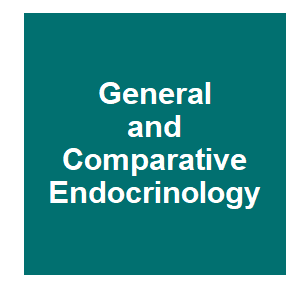
|
Sex determination in Neotropical fish: Implications ranging from aquaculture technology to ecological assessmentJ. I. Fernandino and R. S. Hattori, General and Comparative Endocrinology, 273:172-183. 2018.
The high biodiversity of fish in the Neotropical region contrasts with scarce or biased studies on the mechanisms involved in the sex determination in members of this fauna. In this review, we attempted to compile the information available on determination, differentiation, and ... Keywords: agriculture, breeding system, Cas 9, cattle, CRISPR, Gene drive, sex-ratio |

|
Rapid comeback of males: evolution of male-killer suppression in a green lacewing populationHayashi, MN, M.; Kageyama, D., Proceedings of the Royal Society B-Biological Sciences, 285:6. 2018.
Evolutionary theory predicts that the spread of cytoplasmic sex ratio distorters leads to the evolution of host nuclear suppressors, although there are extremely few empirical observations of this phenomenon. Here, we demonstrate that a nuclear suppressor of a cytoplasmic male ... Keywords: agriculture, breeding system, Cas 9, cattle, CRISPR, Gene drive, sex-ratio |
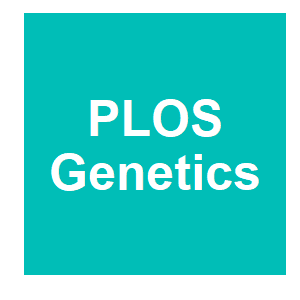
|
Selfish genetic elementsAgren, JAC, A. G., PLOS Genetics, 14:20. 2018.
Selfish genetic elements (historically also referred to as selfish genes, ultra-selfish genes, selfish DNA, parasitic DNA, genomic outlaws) are genetic segments that can enhance their own transmission at the expense of other genes in the genome, even if this has no or a negative ... Keywords: agriculture, breeding system, Cas 9, cattle, CRISPR, Gene drive, sex-ratio |
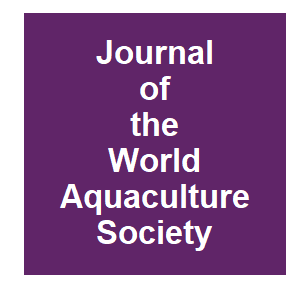
|
Production of YY Supermale and XY Physiological Female Common Carp for Potential Eradication of this Invasive SpeciesM. Y. Jiang, X. X. Wu, K. X. Chen, H. R. Luo, W. Yu, S. T. Jia, Y. M. Li, Y. F. Wang, P. H. Yang, Z. Y. Zhu and W. Hu, Journal of the World Aquaculture Society, 49:315-327. 2018.
The common carp, Cyprinus carpio, is the third most cultivated freshwater species worldwide, but is also considered an invasive species. The Trojan Y chromosome strategy is one of the most promising methods to eradicate this invasive species. However, obtaining fertile YY ... Keywords: agriculture, breeding system, Cas 9, cattle, CRISPR, Gene drive, sex-ratio |
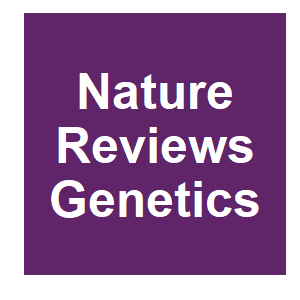
|
Cheating evolution: engineering gene drives to manipulate the fate of wild populationsChamper, JB, A.; Akbari, O. S., Nature Reviews Genetics, 17:146-159. 2016.
Engineered gene drives - the process of stimulating the biased inheritance of specific genes - have the potential to enable the spread of desirable genes throughout wild populations or to suppress harmful species, and may be particularly useful for the control of vector-borne ... Keywords: agriculture, breeding system, Cas 9, cattle, CRISPR, Gene drive, sex-ratio |

|
Demographic effects on the use of genetic options for the control of mosquitofish, Gambusia holbrookiR. E. Thresher, M. Canning and N. J. Bax, Ecological Applications, 23:801-814. 2013.
This study tests the sensitivity of genetically based pest control options based on sex ratio distortion to intra-and intersexual aggressive interactions that affect male and female survival and fitness. Data on these interactions and their impacts were gathered for the ... Keywords: agriculture, breeding system, Cas 9, cattle, CRISPR, Gene drive, sex-ratio |
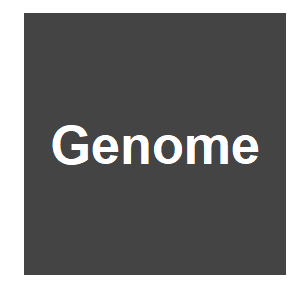
|
B chromosomes and genome size in flowering plantsTrivers, RB, A.; Palestis, B. G., Genome, 47:1-8. 2004.
B chromosomes are extra chromosomes found in some, but not all, individuals within a species, often maintained by giving themselves an advantage in transmission, i.e. they drive. Here we show that the presence of B chromosomes correlates to and varies strongly and positively with ... Keywords: agriculture, breeding system, Cas 9, cattle, CRISPR, Gene drive, sex-ratio |

Contact
David O’Brochta
Foundation for the
National Institutes of Health
geneconvenevi@fnih.org
RSS

